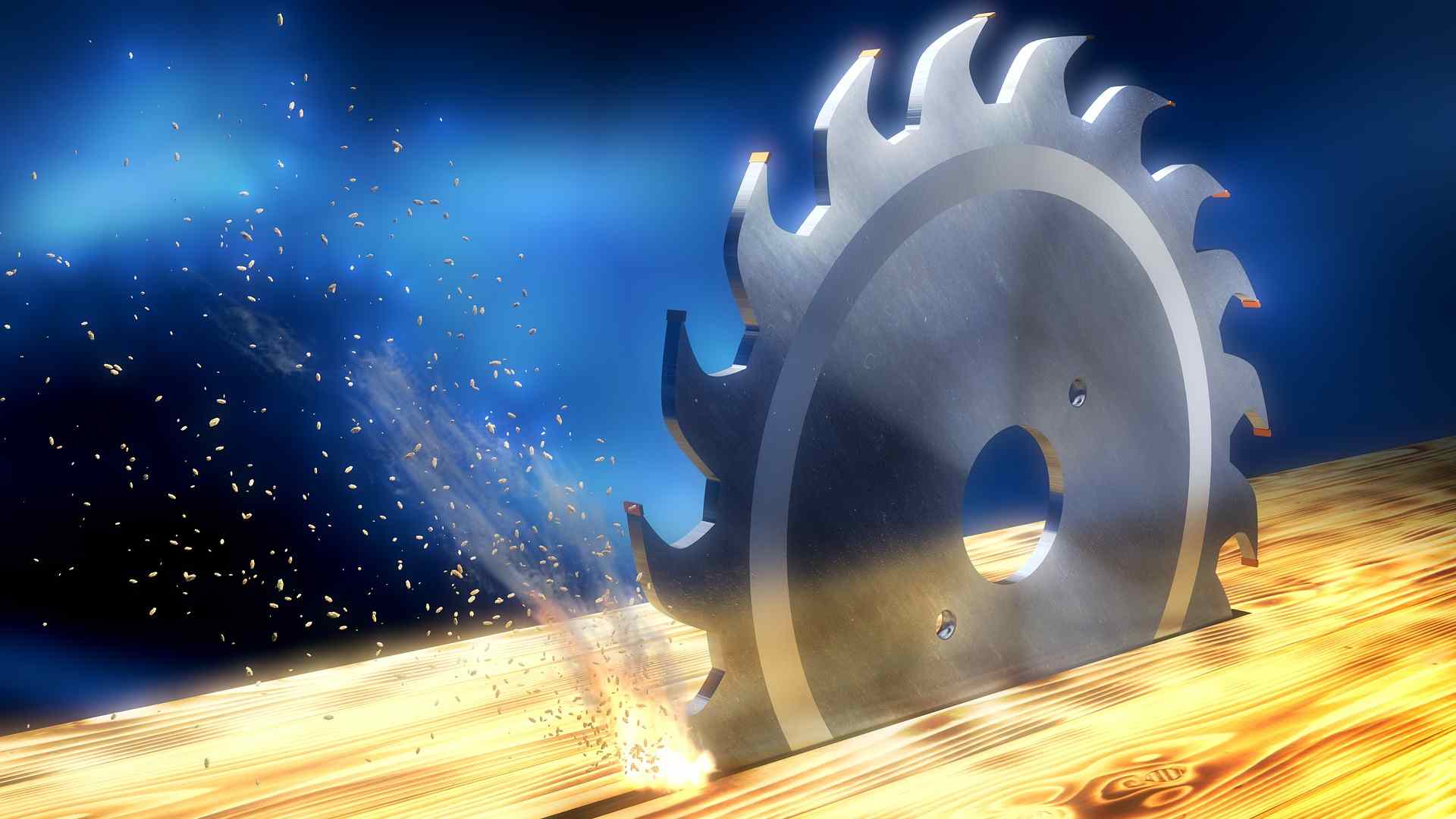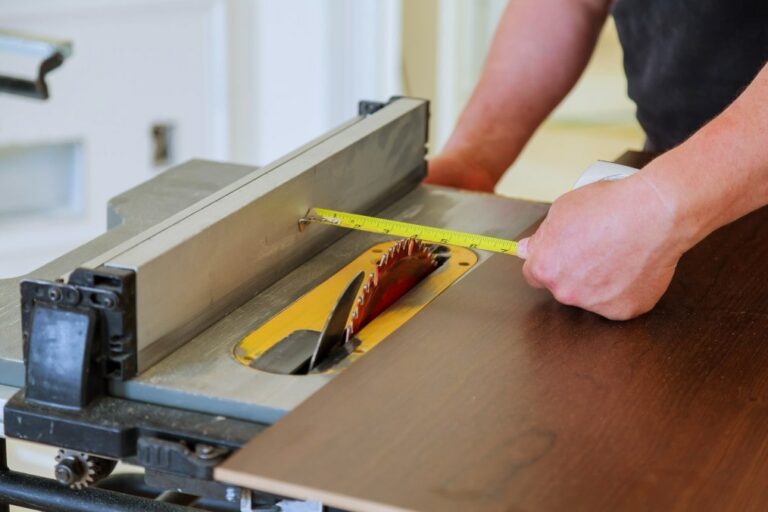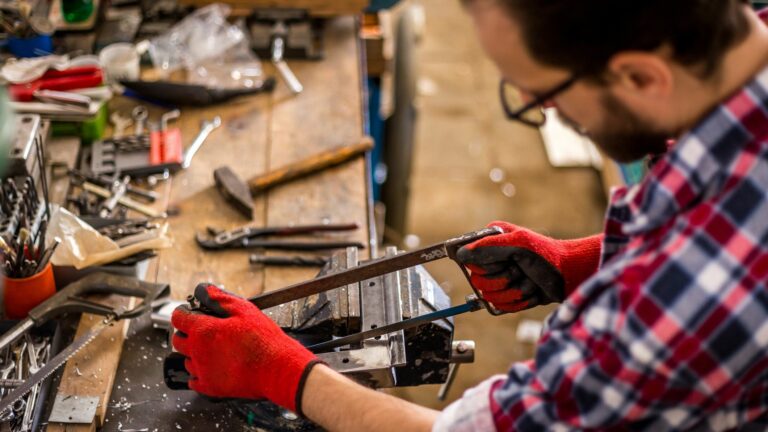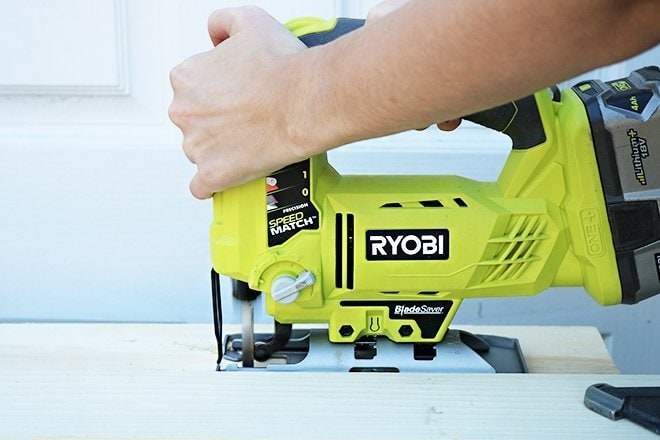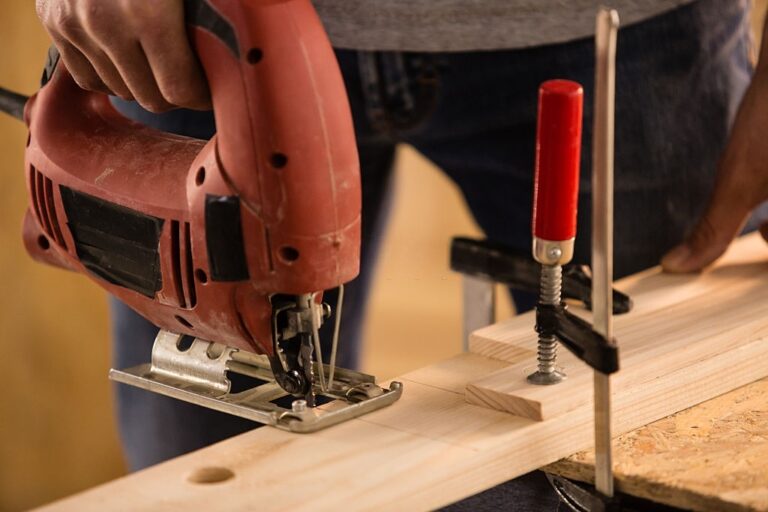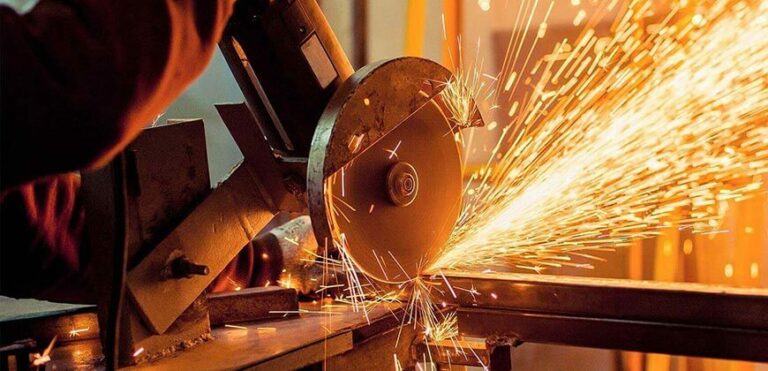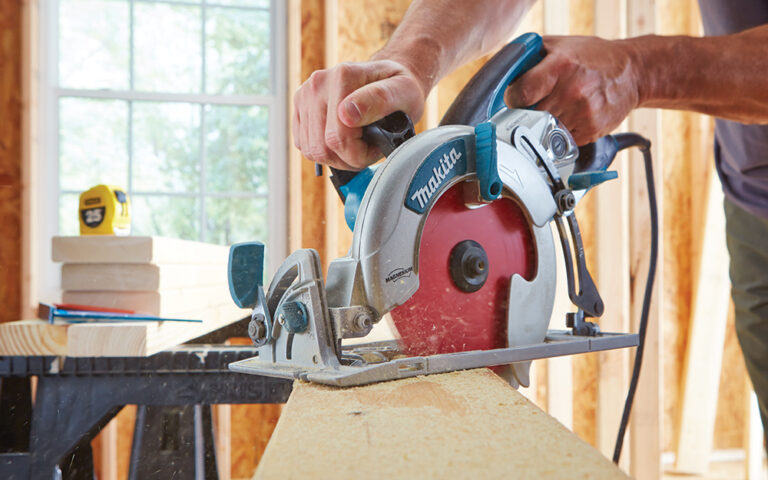Saws have been used since ancient times and for a variety of purposes. We doubt whether you’ll believe it or not but the saws had found their existence thousands of years ago. We are in a growing world where new technologies are being introduced every day. But even today, different types of saws come up with the same demand as before.
Saws are available in a variety of forms, and each form serves different purposes. These tools have various names, shapes, and sizes. A specific type of saw can make your task more relaxed and easier. So it becomes imperative to get complete knowledge of all the saws available. Most of the time, people opt for improper saws that leads to damage of their pieces and can even harm themselves. So we’ll be mentioning all the types of saws available in this article along with their uses. And if you’re interested in buying one for yourself, then follow the section below.
Generally, the common categories in which the saws are divided are-
- Hand Saws
- Power Saws
Here is the list of 30 different types of saws along with their uses and pictures:
Table of Contents
Types of Hand Saws
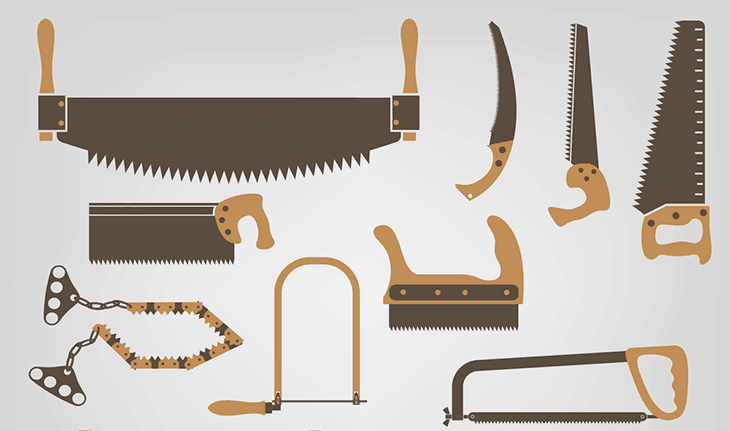
Hand Saws are the most general type of saws you’ll find around. These are often known as panel saws, and the primary purpose of this type of saws is to cut woods in different shapes and sizes. After cutting, these pieces can be joined together in a particular manner to construct an object.
These saws put on sharp pressure at the required point on the wood and make cutting possible. The woodworkers used Hand Saws in past days. However, you’ll still find these types of saws in the market very easily.
Back Saw
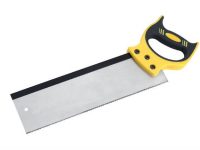
This is a common type of Hand Saw. Based on the design, it appears very similar to tenon saw or miter saw. The length of the saw is gently short as compared with other saws, and it consists of a narrow blade. At the upper edge, the blade of the saw is strengthened.
People can find the use of this saw with the miter boxes. Whenever a woodcutter needs a tool for fine and consistent cutting, we would recommend them to use this backsaw. Also, one can use this for 45 or 90-degree corner cuttings.
Coping Saw
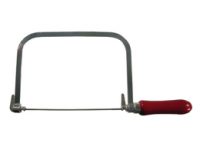
This is another Hand Saw which has a D-shaped frame holding a thin blade. It comes with different types of blades, and you can use this for shaping wood and even metals. It is quite useful and also simple to use.
You might be questioning how it is simple to use. With the coping saws, one can easily remove and insert a new type of blade required for a particular task, which becomes very convenient. You can use this saw for cutting curves, trimming, and joining work. So anyone out of plumbers, furniture makers, or carpenters can show their interest for this saw.
Bow Saw
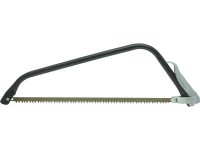
This is again a type of Hand Saw which is generally used for outdoor purposes. It has got a bow type shape. People can use this saw in numerous ways, like pruning, trimming tree’s stems, and leaves.
It uses a long blade that has crosscut teeth. We think you must have seen this type of saw in your everyday life. User will be able to achieve straight as well as curved cutting with the bow saws. Moreover, some people can also identify this saw as swede saw, Finn saw, or bucksaw.
Crosscut Saw
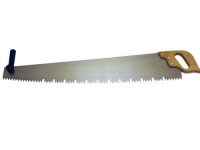
Crosscut Saw is another useful Hand Saw, which is one of the oldest saw of ancient time. If you’re looking to cut the wood perpendicular to the grain, then crosscut saw should be your pick. This saw uses a thick blade that has broad and beveled teeth. And that’s why it is best for rough cutting, and trimming branches.
It has small as well as large sizes that you can use as per the work. If you’ve to perform precise woodworking, then small one can be considered, and for coarse working, the large one would be the ideal choice.
Hacksaw
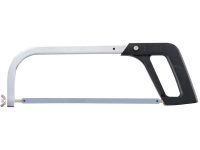
Hacksaw is one of the most popular types of Hand Saw available in the market. This saw is specially used for cutting tubes and pipes. Apart from this, users can also use this for cutting metals, wood, and other materials.
The most impressive feature of this saw is the lightweight design that makes it easier to use. Hacksaw consists of a fine-tooth blade that is inserted in a C-shaped frame. The blade has around 18 to 32 teeth for every measured inch.
Fret Saw
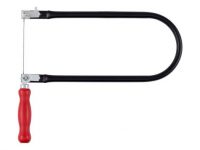
Fret Saw is a type of Hand Saw which has a larger frame size. You might confuse this type of saw with the coping saws as both have almost similar blades, but fret saw is suitable for more delicate tasks. Because of the larger frame, this saw becomes eligible for more extensive cutting.
This saw has a deep 10-20 inches frame and a shorter 5 inches blade. With the help of this saw, you’ll be able to perform tight curves cutting. However, you will not be able to rotate the blade of this saw. Users who need much tighter cut can have a blade with 32 teeth per inch.
Japanese Saw
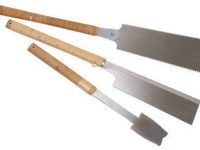
This is a Hand Saw that has only one handle which is used in Japanese carpentry and woodworking. It is a style of carpentry which originated in Japan. Followed by the handle, there is a short blade which is quite strong and thin as well. Because of the small dimensions, you can use this saw at any place which was not possible with other saws.
Japanese saws are of three types: dozuki, ryoba, kataba. This saw has two different types of teeth; one is crosscut teeth that prepares a guide path, and the other is rip teeth that apply to finish work. It is an excellent choice for pet type softwood. However, you can’t use this saw with hardwood.
Pruning Saw
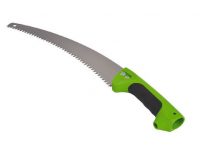
You’ll get a feeling of pistol or revolver while holding pruning saw. The handle of the saw has a unique design called a pistol grip. Pruning saw consists of a curved blade which has a length of 13-15 inches.
The blade of the saw has wide teeth, and the coarse teeth are capable of cutting from both sides. Due to this, the removal of material needles faster and easier. This saw can turn out to be a good pick for homeowners, landscapers, and tree surgeons. Also, it can be used for lawn services.
Keyhole Saw
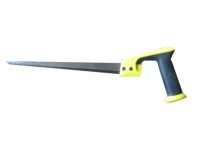
This is another type of Hand Saw that has a unique design, just like a sword. Most people call this saw as alligator saw, pad saw, or drywall saw. It has a round handle followed by a sharp and projecting blade. Keyhole Saw allows users to cut round shapes, curves, and irregular patterns.
It is very lightweight and also has small dimensions. Due to this, it can be used to remove any small section or part of a wood. Also, when there is a possibility of any damage to a particular area, then small saws like keyhole saw can be used. Keyhole Saws are of two types: fixed bladed and retractable bladed.
Rip-Cut Saw
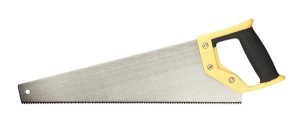
This is another type of Hand Saw that is mainly used for framing purposes. Most of the people simply call this saw a hand saw. The blade of the rip cut saw has relatively less number of teeth per inch. However, they are quite sharp to remove the materials effectively.
Buyers may find rip saw and crosscut saws similar in quite a manner, but they are different based on their function. With crosscut saw, users can cut wood perpendicular to the grain, but with rip cut, they can cut parallel to the grain. A typical rip cut saw can have about five teeth per inch.
Veneer Saw
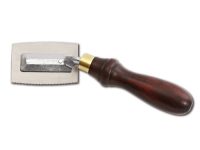
The Veneer is another hand saw type that finds a place in our saw list. This saw comes with a special double-edged blade which is short and holds about 13 teeth per inch. The length of the saw can vary between 3 to 4 inches. The primary use of this saw is for cutting hardware veneer.
One thing that we like about this saw is, it allows users to cut from both the edges. The veneer is a fine wood which can be thin by physical design, but you can’t use a knife to cut it. So buying a veneer saw will be a perfect decision.
Wallboard Saw
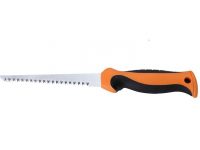
Finally, we’re ending our research for the different types of hand saws with the Wallboard saw. You might find this saw similar to a keyhole saw, but Wallboard saws come with a broader blade and shorter length. Also, it has relatively lesser teeth every inch.
Usually, you’ll find a one-edged blade with the Wallboard saws, but few releases come with double-edged blades. To make any changes through panels, one can use this type of saw without any doubt. There’s a requirement of starter holes for power tools, and fortunately, this saw is capable of doing that too.
Types of Power Saws
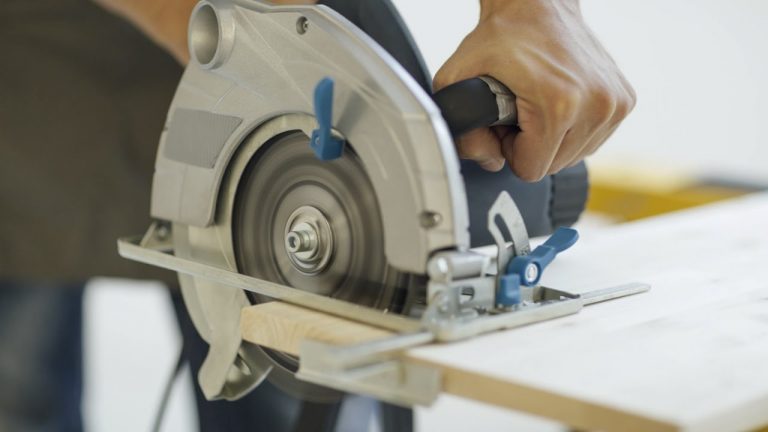
By the name itself, you can know much about these types of saws. These saws are for those people who can’t throw in extreme efforts with hand saws.
These Saws require power to operate and can cut large and thick pieces of wood in almost no time. And that’s the only reason why most of the people prefer power saws, as it requires fewer efforts of an individual. So if you want to add convenience to your tool kit, then don’t think twice about buying a power saw.
Stationary Band Saw
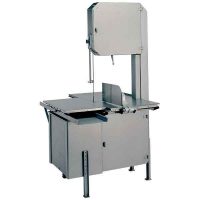
It is quite a large Power Saw which is floor standing and holds big pulleys at the top and bottom of the cutting table. These pulleys continuously move the band of fine teeth for effective cutting.
This saw is useful for giving a curve cut to the wood. Also, it helps to cut PVC pipes and tubes. Users can even cut thinner boards with the saw, but they’ve to do it by following a particular style.
Portable Band Saw
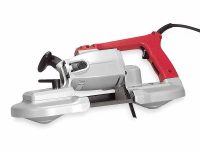
One difference you’ll notice between a stationary band saw and portable band saw is their size. Portable band saws are comparatively smaller in size than the stationary one. If you’re looking to do the same job that you did with the stationary band saw, but at outdoor space then having a portable band saw will be fruitful for you. It will do the same job, plus the portability factor will ease your task.
These don’t have any pulleys on the flip side, so creating linear cuts will be difficult. Also, users will be able to cut the pipes having a depth of 3 to 4 inches. Carpenters and plumbers can easily take this portable band saw with them, so it’s the right choice for them.
Chop Saw
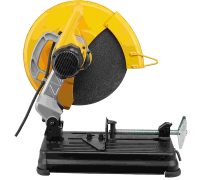
Chop Saw is the smaller version of the circular saw. However, it is also one of the largest saws available that brings on the portability feature. This type of saws comes with a connected water line whose job is to remove the dust accumulation while cutting.
The Chop saws are manufactured in two different versions: metal and masonry cutting version. The blades of this saw have special abrasives for cutting task. Some people also call this saw with other names, like concrete saw, abrasive saw, and cut-off saw.
Circular Saw
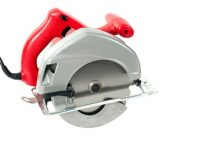
This is a type of power saw which is also known as a buzz saw. This saw uses a blade that has teeth of 7.25 to 9 inches in diameter. It is one of the most popular power saws that can effectively cut wood, plastic, metals, and other materials as well.
These Circular power saws are of two types: worm drive and sidewinder. A worm drive has more weight and torque than the sidewinder ones. Users can choose from different kinds of blades available to crosscut. There will be a lever using which you can easily adjust the height of the blade. Also, you can lock the height at the required level.
Chain Saw
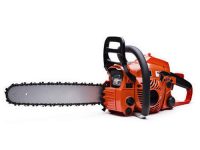
Chain Saw is again a popular type of saw which is a power and handheld saw. As the name suggests, there is a role of a chain in the working of this saw. Chain saw consists of a linked chain that holds a lot of ripping teeth.
For all the heavy load tasks, using a chainsaw will make your work easier. Moreover, it is beneficial in tree cutting work. This type of power saws uses a two-stroke combustion engine that is quite powerful and noisy.
Compound Miter Saw
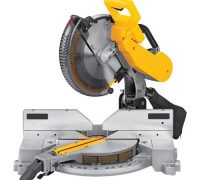
If you’ve to do some work that involves linear cuts, compound cuts, or miter cuts, then buying a compound miter saw will be a perfect pick. The blade of the saw is uniquely positioned on the arm such that you can cut at different angles. It means you don’t have to pivot it up and down to adjust.
This machine performs very fast whenever you’ve to trim windows or add crown molding. It means you’ll be saving a lot of time while operating this unit. Also, it can be useful for sophisticated scrollwork and trim.
Jigsaw
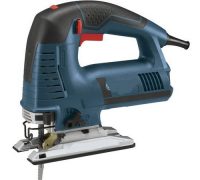
Jigsaw is a handheld power saw that consists of a fine-tooth and short blade. This blade can be moved up and down with different speeds. The most common application of this saw is cutting metal sheet and shaping plywood.
Some other names of the saw are: bayonet saw, or sabre saw. This saw comes with a unique design that helps you while cutting curve shapes. Here, you don’t have to apply force while working as it may end up with uneven cutting or breaking the blade. Some users may find some difficulty while controlling this saw, so we recommend you to look for a cordless model or with a long cord. You can find the best jigsaw for yourself in our detailed jigsaw buying guide.
Flooring Saw
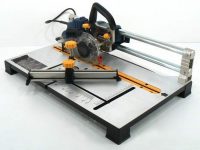
Flooring Saw is a portable power saw which is used for those flooring that needs to be re-sawed. So if you’ve hardwood, laminate, or bamboo floor at your place, then you must look out for this saw. Yes, table saw, miter saw, and other tools can be useful for designing the floors, but this saw will replace all of them.
As we said, it is a portable power saw, which means you don’t have to move the materials from one point to another. Consequently, you’ll save a lot of time while operating with this unit.
Miter Saw
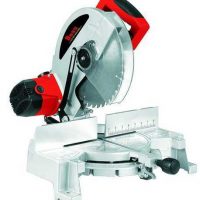
Miter Saw is useful for the jobs that involve high precision angle cuts and measurements. This saw can be used for miter cuts, cutting across the thickness of a board, or cutting wood perpendicular to the grain.
This saw can be turned around to 45 degrees on both sides, making a total cutting angle of 90 degrees. As said earlier, this saw is helpful for work that requires accuracy, so using it for molding and wooden frames will be the right decision.
Radial Arm Saw
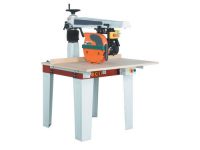
If you’ve to make similar miter cuts, compound cuts, and many other cuts, then radial arm saw will make you do that. In this saw, motor and blade are placed on an arm that can extend to the cutting table. Some of the radial arm saws manufacturers allow their users to interchange radial saw blades with circular saw blades.
However, you’ve to look after the rotating speed of the blade as the spin speed of a few radial saws is very fast. You can also cut long pieces of wood or any other material with this saw.
Tile Saw
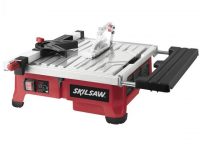
Considering the design, most users find a tile saw similar to a miter saw. As the name suggests, a tile saw is used to cut through tough tiles. It can cut materials like ceramic, porcelain, granites, marbles, and stone.
Tile saw comes with a diamond-coated blade and water cooling system, which provides smooth and effective cutting. Based on the type of cut you need, tile saws are available in two variants: wet and dry cut tile saws. A wet tile saw prevents the saw blade from getting overheated and make smooth cuts as a result.
Rotary Saw
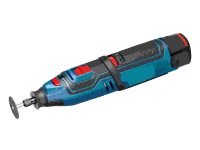
Rotary Saw has a screwdriver type design handle and includes a fixed blade. People can use this rotary saws for repairing a wall, so it’s an ideal product for construction workers.
Similar to a keyhole saw (a hand saw), users can also use this saw for cutting tasks, paneling, and drywall. This rotary saw appears to be a drill. All and all, this power saw is capable of doing anything from crafts to construction.
Reciprocating Saw
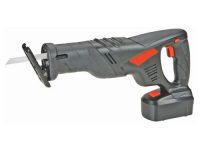
This is another type of power saws that includes a reciprocating blade, which is also known as Sawzall. It uses a parallel blade which is capable of cutting pipes, drywall, wood, and other materials as well. Apart from this, it can also be useful for cutting under the wall or wood joints.
The blades of the reciprocating saw are capable of cutting from nail to wood. Quite similar to a jigsaw, users can also move the blade of this saw back and ahead very effectively. You’ll be able to do demolishing work with this saw, but you’ll miss fineness work.
Scroll Saw
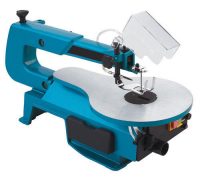
At first sight, you may not consider it as a saw and find its design similar to a sewing machine. There are three ways to operate this saw: with a reciprocating blade, the band, or with the continuous blade. The functions of this saw are very similar to that of coping saws.
This saw allows you to make the curved cut or spiral designs. You can lay the material on the table and can rotate it for precise cutting. So if you’ve to create curves with edges, it is simply the best for it. Honestly, working with a table offers you great convenience.
Table Saw
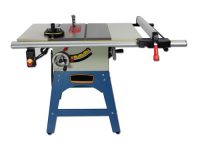
The blades of a table saw is larger as compared to the circular saw. Under the table, there’s a high-speed motor that operates the blade. You’ve to place the material over the table and then cut it with the help of the blade. You’ve to go smart here as the blade is exposed so that you may harm yourself.
However, it is upon you to decide how many blades do you want to present. It means you can also adjust the depth of cut. This makes it ideal for making rip cuts or creating big pieces of identical size. Users can even use this saw with metal and masonry blades, but you’ve to look after it as the motor’s speed can be a trouble. You can check out our buying guide to find best portable table saws in the market.
Oscillating Saw
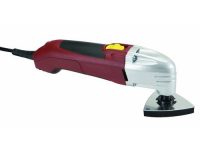
It had been quite a while since orthopedic surgeons have been utilizing this oscillating saws. This saw makes use of a vibrating blade that is helpful while cutting in a limited space. Apart from cutting, users can also use this saw for grinding, sawing, and sanding.
So whether you’re a carpenter, flooring and cabinet installer, or contractor, using an oscillating saw will always benefit you. Even though this saw uses a vibrating blade, it doesn’t lay any dust on the material. It yields out immaculate results. With the help of the variable speed trigger, you can easily control the speed of the blade.
Masonry Saw
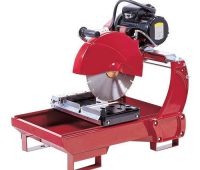
Masonry saw is quite known to a standard hand saw. However, the blades and teeth of Masonry saw are larger than that of a hand saw. Also, masonry saw comes with a pistol grip handle. If you’re aiming to cut lightweight concrete blocks then buying a masonry saw will solve your problem.
For a masonry blade, the length of the blade can vary from 24.6 to 27.5 inches. However, you also get an option to remove the blades from the handle. This saw generally holds 1-3 teeth every inch of length. It also has some gullets with the depth that is for carrying waste materials.
Pole Saw
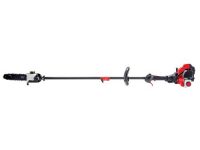
A pole saw is the one in which a saw is attached at the end of the pole. By the name itself, you can imagine the design of the pole saw. When this pole is powered, it can do the job of a typical chain saw.
Users can power this pole saw by electricity, petrol, or you can also find some great cordless pole saws too, which run on a battery. You can also use this saw when it is not powered, but now, a pruning saw will be attached at the end of the pole. So if you love shaping or trimming the trees, and is a must to own tool for you.
Track Saw
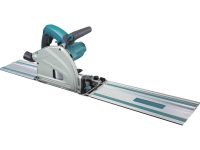
For all those tasks that involve incredibly high precision linear cutting on wood, track saws come into play. When compared with others, track saws perform similar actions like a circular saw. We can say that it is a modified version of the circular saw.
Talking about performance, the Saw doesn’t diverge and moves in a straight line with the direction of metal. It means the saw will not slip or move away from the cutting path. Most of the track saws use metal tracks that give you the direction or track line. Users also call this saw as plunge-cut saw.
Things to Consider When Buying a Hand Saw
Whenever there’s talk about woodworking, hand saws are the first thing that strikes every mind. Hand saws are being used since the old days. And if you lack the knowledge for hand saws but need one for your tool kit, then we’re going to introduce some parameters that you should keep in mind while buying a hand saw.
Type
Honestly speaking, we don’t think that you’ll be requiring any more knowledge on the type of hand saw. We’ve continuously talked about the same in the earlier half of the article. We have enlisted all the types of hand saws available with their description and usage. For example, back saws are good for those tasks that require fine consistent cutting, bow saws for pruning and trimming, crosscut saws for rough cutting saws, and many saws with different usage.
Every individual needs a specific saw for a particular task. So it is totally upon you to match your needs with a perfect type of hand saw. However, you can take the help of our guide and find out an excellent pick for your tool bag.
Shape Of The Tooth
All the hand saws available in the market generally have two tooth configurations: “Rip” and “Cross Cut.” But you can also change the saw’s tooth shape by any sharpening tool. Apart from rip and crosscut way, there’s another tooth shape configuration called “Sash” tooth.
We would recommend you to buy this saw only if you have a limited budget or can’t afford two saws. But, it will not deliver the same performance as that of Rip and Crosscut shape.
- Rip Teeth – The hand saws having rip teeth shapes are suitable for cutting along the length of the wooden board. Each tooth of Rip Teeth appears like a chisel and even performs in the same manner.
- Crosscut Teeth – The hand saws having crosscut teeth shapes can be used for cutting across the grain of the material. Each tooth of crosscut teeth looks like a knife blade and even performs in the same manner.
No. Of Teeth Per Inch
It is another essential factor that you should look after while buying a hand saw. The number of teeth per inch (also known as points per inch, PPI) lets you know whether the saw is capable of doing a specific task or not. Larger hand saws allow you to cut significant lengths through the wood, but they leave behind the rough surface.
On the other hand, smaller hand saws are known to make fine cuts, but this is not recommended to make longer cuts. For a regular hand saw, rip teeth are larger as compared to crosscut teeth. Whereas, for back saws, size of rip teeth usually varies from the size of crosscut teeth.
The number of teeth per inch (TPI) or points per inch (PPI) is mentioned in the saw plate. When you count one point to another, it is known as PPI. And when you count the full teeth, it is called TPI. However, the most common method to find no. of teeth is PPI. Moreover, users can even change the number of teeth per inch by sharpening techniques.
Things to Consider When Buying a Power Saw
Power saws pack some real features and offer great convenience to all its users. They are straightforward to use, performs accurately, and makes the difficult job more manageable. So if you’ve set up your mind to buy a new power saw for your tool bag, then here’s what you should consider while looking for one.
Setup and Power
Similar to a non-powered hand saw, power saws also have the handle in line. The working of the saw is the same as you use a sharp knife to cut across the wood or any material.
These saws are very easy to use. Setup for any power saw is effortless and straightforward, so you don’t have to throw away your mind to use it. The average power that a powered hand saw possess is around 3.4 amp that can do the cutting job effectively.
Corded or Cordless
The next big question that arises in every buyer’s mind is whether he should go with an electric-powered saw or battery-powered saw. Earlier, people won’t think much about this factor and believe that corded saw offers more power. But as of the current scenario, the all-new lithium-ion powered battery is used in power saws which are no less than corded ones.
One problem that is associated with the corded power saws is shorter cord length. In most of the model, the length of the cord measures under a meter. Also, all those trailing cables and extension can turn to be dangerous as you’ll have a sharp moving blade in your hand. Fortunately, there’s no such risk associated with the cordless power saws.
A cordless power saw will also allow you to use your tool freely. So when you’re performing a cut, you don’t have to think about the cables or uneven weight distribution. All and all, your sawing experience with a cordless saw will be more accurate and convenient.
The only thing that can resist you for buying a cordless model is a limited budget. The company would charge more for the helium batteries, and also for the charger provided. On the other hand, a simple plug-in-and-go (corded model) would cost less and save your hard-earned money. So depending upon the budget and work, one could choose between corded and cordless model.
Brushed or Brushless
Whether it’s brushed or brushless electric motor, both of them uses magnets that are responsible for the rotary motion. Earlier, the brushed electric motors had four parts: a ring of magnets, an armature, carbon brushes, and a commutator.
Here, the magnets and the carbon brushes remain stationary, whereas, the armature and commutator move together in between the magnets. On the other side, a brushless electric motor doesn’t feature brushes and the commutator. Instead of brushes and commutator, there’s a small circuit that coordinates energy delivery to the copper windings.
Wrapping Up - Different Types of Saws
When you look around the market, you’ll find that there are loads of saws available to choose. But there’s a way using which you can decide which one is best for you. All you’ve to do is determine your purpose, and select the saw that fulfills your needs.
Different types of saws showcase various features. So you may have to regret your choice if you don’t do proper research before purchase. We have mentioned all the saws available along with their description and uses. Hope we helped you to find the right type of saw for you.
- Best Benchtop Bandsaw Reviews of 2022 – Buying Guide - February 11, 2022
- How to Use a Jigsaw Properly – Beginner’s Guide - October 25, 2021
- How to Cut a Square Hole in Wood using DIY Tools - October 9, 2021

